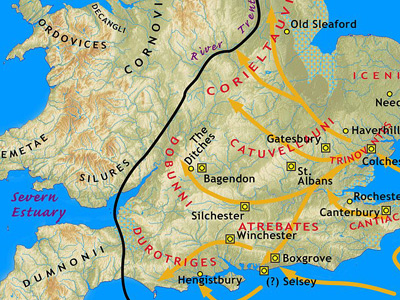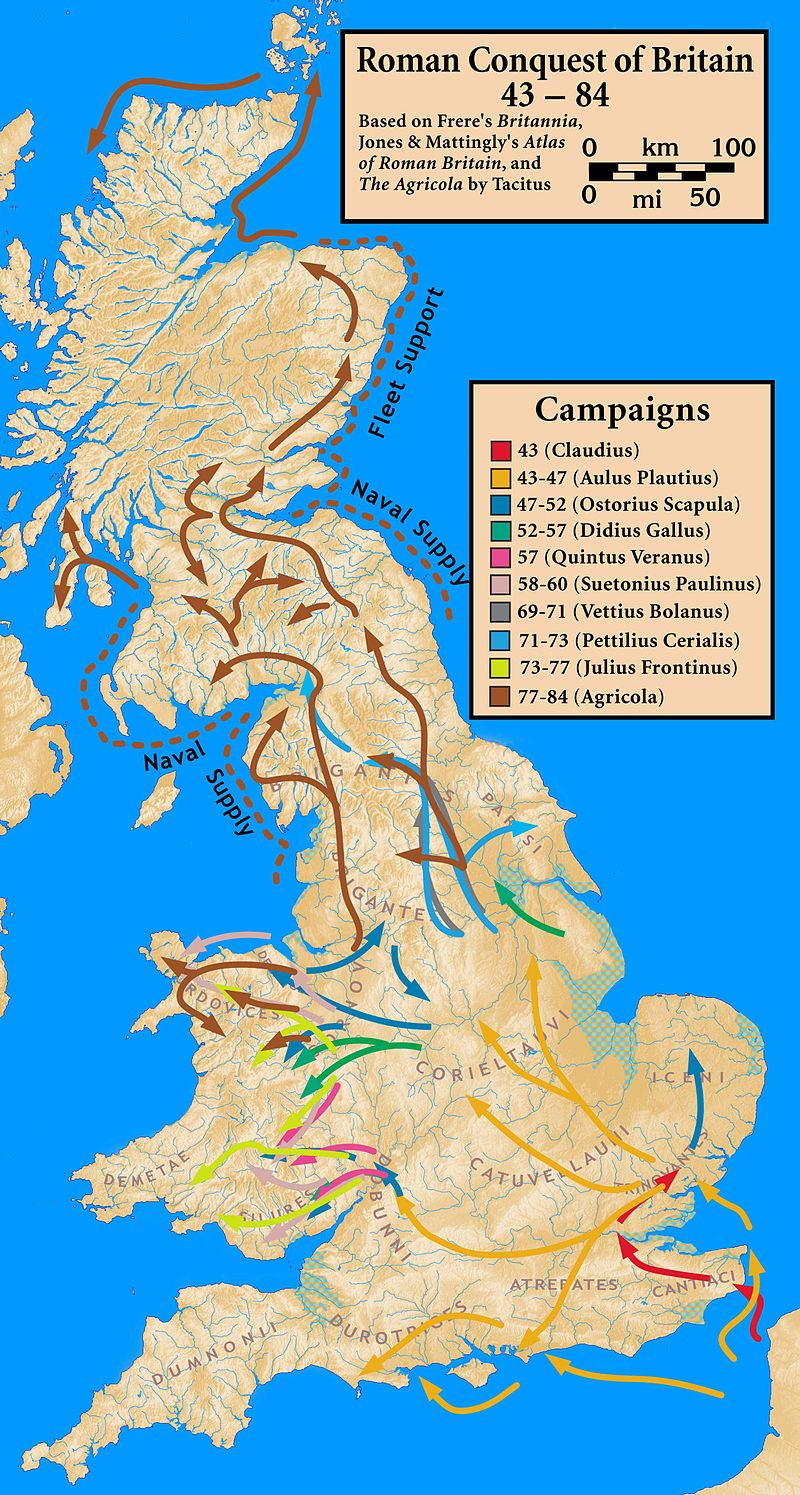Roman conquest of Britain (43-96 AD)
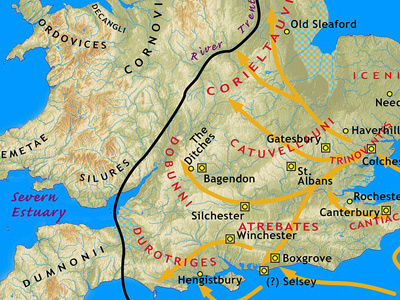
River Battles
British resistance was led by Togodumnus and Caratacus, sons of the late king of the Catuvellauni, Cunobeline. A substantial British force met the Romans at a river crossing thought to be near Rochester on the River Medway. The battle raged for two days. Hosidius Geta was almost captured, but recovered and turned the battle so decisively that he was awarded the "Roman triumph."
The British were pushed back to the Thames. They were pursued by the Romans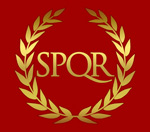 The Roman Empire was the post-Republican period of ancient Rome. As a polity, it included large territorial holdings around the Mediterranean Sea in Europe, North Africa, and Western Asia, and was ruled by emperors. The first two centuries of the Roman Empire saw a period of unprecedented stability and prosperity known as the Pax Romana ('Roman Peace'). The Empire was later ruled by multiple emperors who shared control over the Western Roman Empire and the Eastern Roman Empire. across the river causing some Roman losses in the marshes of Essex. Whether the Romans made use of an existing bridge for this purpose or built a temporary one is uncertain. At least one division of auxiliary Batavian troops swam across the river as a separate force.
The Roman Empire was the post-Republican period of ancient Rome. As a polity, it included large territorial holdings around the Mediterranean Sea in Europe, North Africa, and Western Asia, and was ruled by emperors. The first two centuries of the Roman Empire saw a period of unprecedented stability and prosperity known as the Pax Romana ('Roman Peace'). The Empire was later ruled by multiple emperors who shared control over the Western Roman Empire and the Eastern Roman Empire. across the river causing some Roman losses in the marshes of Essex. Whether the Romans made use of an existing bridge for this purpose or built a temporary one is uncertain. At least one division of auxiliary Batavian troops swam across the river as a separate force.
Togodumnus died shortly after the battle on the Thames. Plautius halted and sent word for Claudius to join him for the final push. Cassius Dio presents this as Plautius needing the emperor's assistance to defeat the resurgent British, who were determined to avenge Togodumnus. However, Claudius was no military man. Claudius's arch says he received the surrender of eleven kings without any loss, and Suetonius' The Twelve Caesars says that Claudius received the surrender of the Britons without battle or bloodshed. It is likely that the Catuvellauni were already as good as beaten, allowing the emperor to appear as conqueror on the final march on Camulodunum. Cassius Dio relates that he brought war elephants and heavy armaments which would have overawed any remaining native resistance. Eleven tribes of South East Britain surrendered to Claudius and the Romans prepared to move further west and north. The Romans established their new capital at Camulodunum and Claudius returned to Rome to celebrate his victory. Caratacus escaped and would continue the resistance further west.
HISTORY
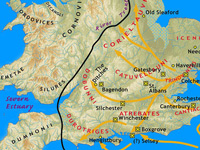
RESOURCES
This article uses material from the Wikipedia article "Roman conquest of Britain", which is released under the Creative Commons Attribution-Share-Alike License 3.0.
© Stories Preschool. All Rights Reserved.
